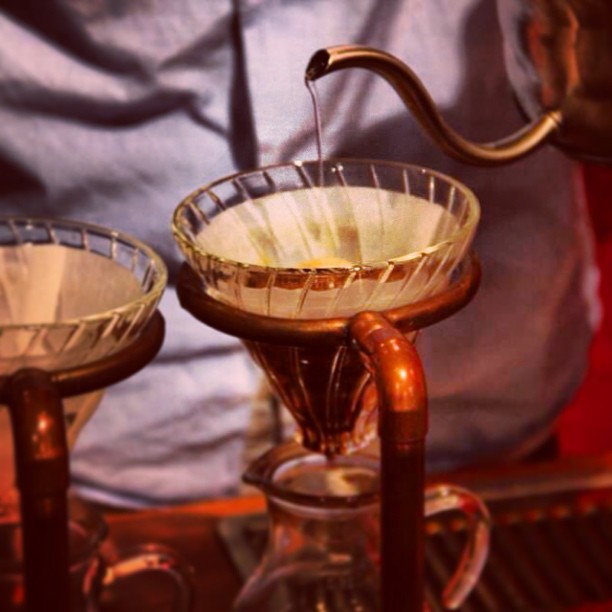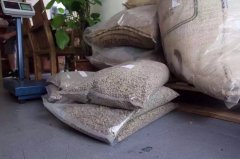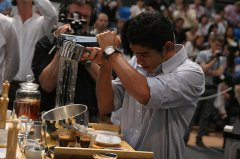In-depth Analysis of Coffee Theory of WBC Champion

To understand the theory of Davies, it is necessary to first find out how many variables there are for a cup of Espresso.
1. Boiler pressure (water temperature) 2. Pump pressure (water pressure) 3. The roasting degree of coffee is 4. The freshness of coffee is 5. The grindability of coffee is 6. The amount of powder is 7. The amount of water is 8. The flow rate is 9. The filling force is 10. The climate is 11. Bean grinder temperature...
For so many variables, the water pressure is the easiest to control, usually 9 BAR, but should it reach 9 BAR in an instant or 9 BAR gradually? I understand that the former has higher requirements for baristas, especially for the strength and evenness of filling, while the latter will have much more stable quality and lower technical requirements for baristas.
In terms of freshness, we should avoid being too fresh or too stale. Davies believes that the better time period is 15 to 30 days, and personal experience is about 5 to 20 days, which may be related to the local climate. Shanghai has high temperature and high humidity, so it may shorten the coffee cycle.
Boiler pressure and water temperature may have different relationships according to the structure of different coffee machines, but water temperature is always a vital factor in the extraction of coffee.
The temperature of the bean grinder will affect the stability of coffee powder grinding, so we should consciously control the rhythm of making coffee, so as to ensure that our bean grinder will not overheat. The amount of powder, the amount of water, the intensity of filling, the degree of grinding and so on will eventually affect the flow rate, and the flow rate is so important because almost all variables will eventually be reflected in the flow rate, and the flow rate will determine the final coffee flavor.
In his theory, Davies believes that flow rate and flow rate are related, so when we have finished debugging, we only need to test one of them. For example, after cup testing, we think that extracting 32 grams of coffee in 28 seconds is a suitable flow rate, then we need to adjust other variables closer to this value. The commonly used variables are grinding degree, powder quantity and water quantity. The flow rate does not want to change too much, and it is generally believed that the best extraction time is 28 seconds, 29 seconds and 30 seconds.
According to Davies's theory, I personally think that in order to use this research method, we can use the encirclement exposure method similar to photography, we can fix some variables, especially the extraction time, and then get different flow rates by changing other variables, and then narrow the range by cup measurement. After determining the approximate flow range, we can adjust other variables to achieve the best flavor.
For example, we can first set the amount of powder to 20 grams, and then get different flow rates by adjusting the grinding degree in 28 seconds, assuming that there is ABC, and finally determine that B is the best flavor, such as 32 grams of coffee liquid, then we can assume that 28 seconds and 32 grams of coffee liquid is the best ratio, and then change the water temperature, powder and other elements to get different 28 seconds 32 grams of coffee liquid. Finally, use this exhaustive method to get the best proportion of this coffee.
Davies theory still has a lot to ponder, but I think the whole research direction and method is true. We must not abandon the classical gold theory, nor doubt it too much. We should let beginners have a practical standard, while in-depth research, we senior baristas can not shirk their responsibility.
Important Notice :
前街咖啡 FrontStreet Coffee has moved to new addredd:
FrontStreet Coffee Address: 315,Donghua East Road,GuangZhou
Tel:020 38364473
- Prev

Female barista, practice is a painful thing.
Female baristas, practice is a painful thing. A few days ago, the Ministry of Labor and Social Security has established 12 new professions, among which baristas are quite eye-catching, because a good barista makes not only a cup of coffee, but also a coffee culture. So, what is a barista? What do you need? How to participate in the training? Job description: not only can make coffee
- Next

Alenjandro Mendez, 2011 world champion of Beresta.
This is no longer Alenjandro Mendez (Alejandro. Mendes) made his first trip to Brista in the world, and we saw him on WBC in London in 2010, entering the second round with a total score of 560.5 and finishing 11th. Alenjandro Mendez comes from the capital of the Republic of El Salvador, the largest city in the country and the economic and cultural center of San Salvador (San
Related
- What is the meaning of lactic acid fermentation with coffee bean treatment?
- How to judge the state of foam by sound?
- How does the latte pull out the unicorn pattern? Come to get for a little trick to improve the flower pull!
- Will flower pulling affect the taste of the latte?
- Do you know the history of coffee?
- The difference between honey treatment and sun washing what is raisin honey treatment?
- What kind of milk can a novice use to make coffee foam to keep the foam longer? The correct method and skills of milking tutorial sharing
- Why do washed coffee beans taste sour? Flavor characteristics of washed Coffee
- Introduction to the skill of how to practice the size and height of water injection around the circle of hand-brewed coffee
- How do beginners practice coffee flower drawing from scratch?

